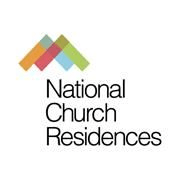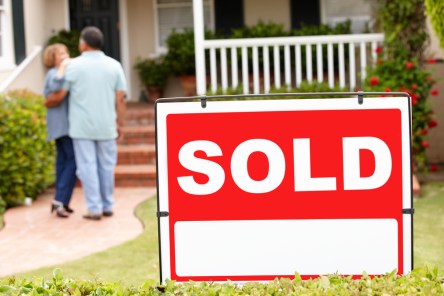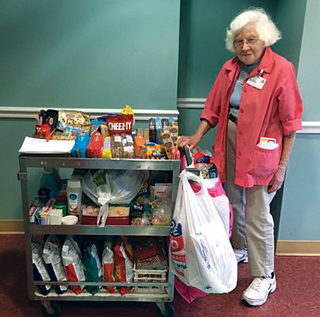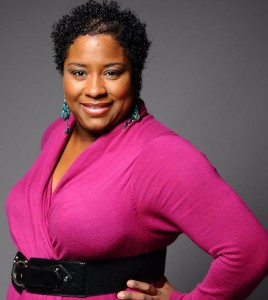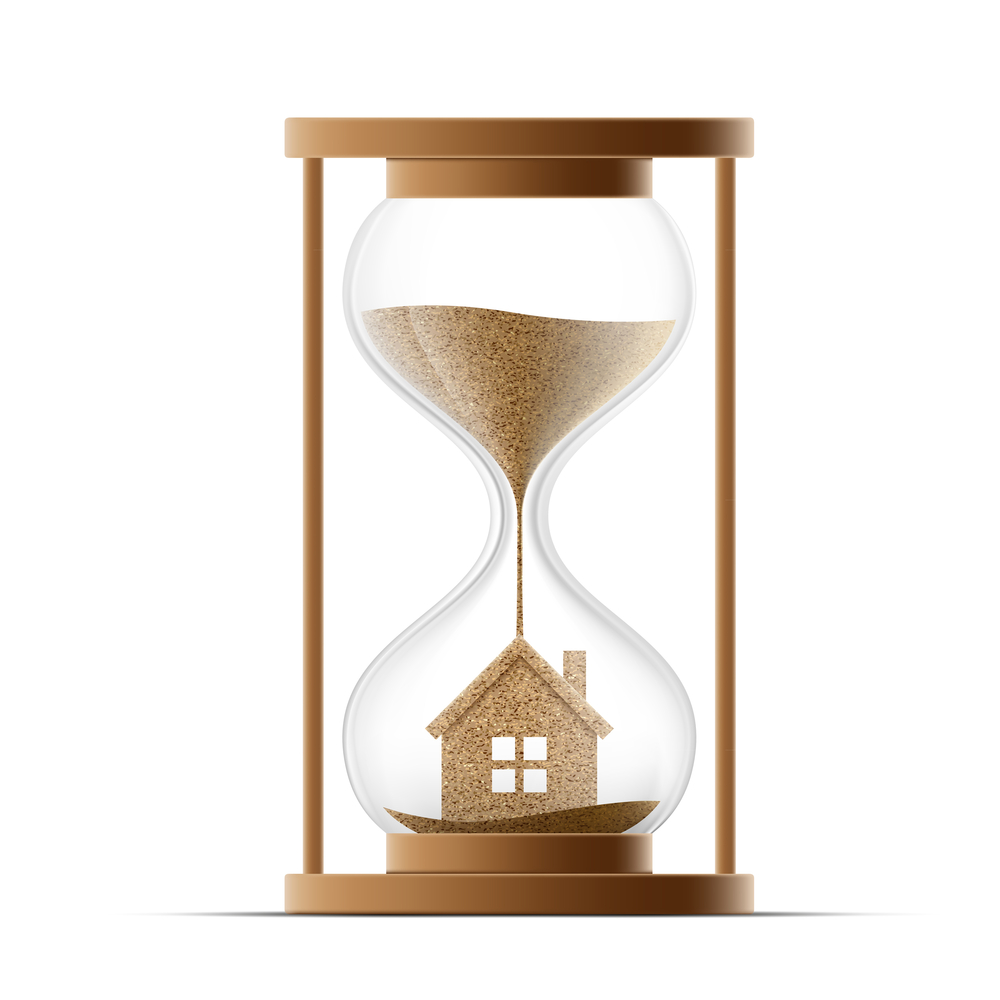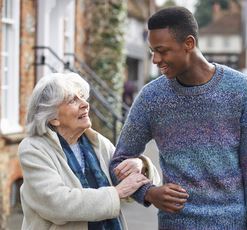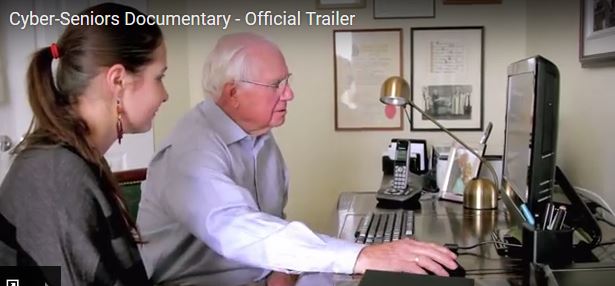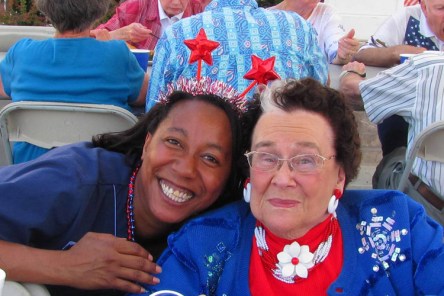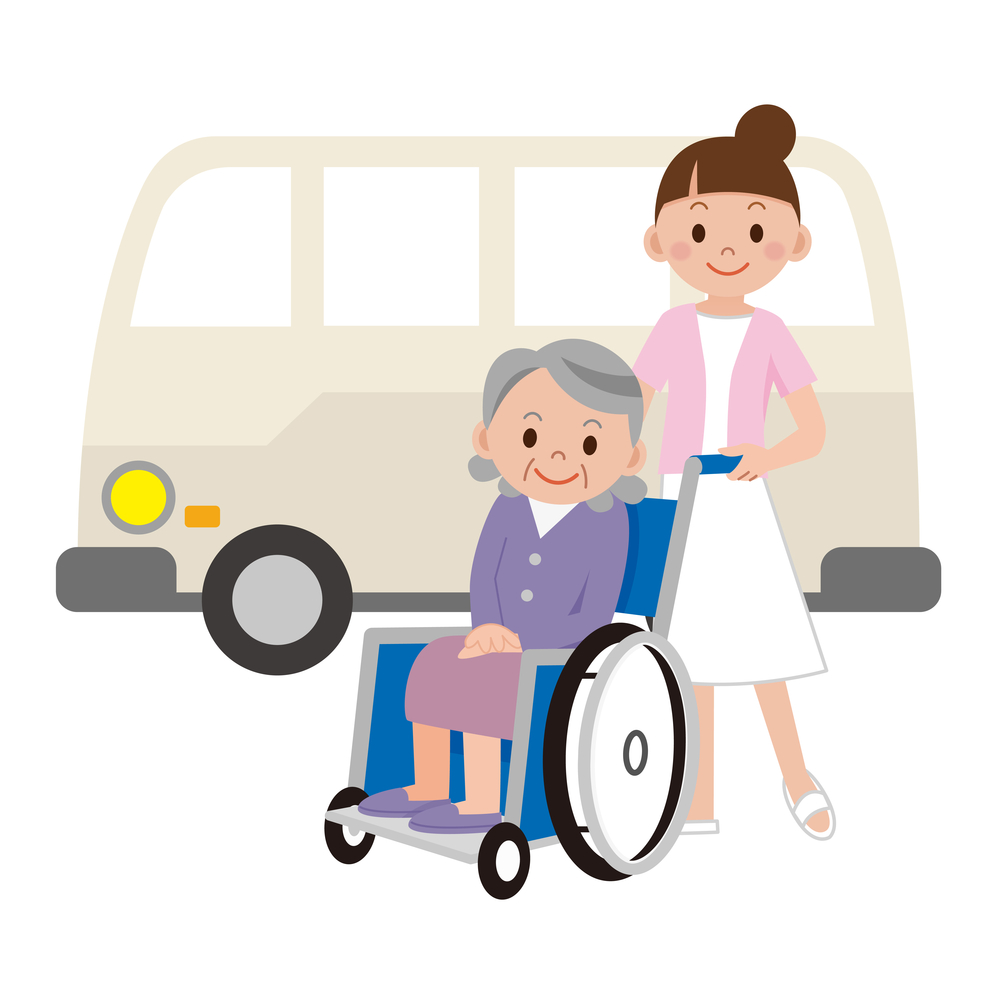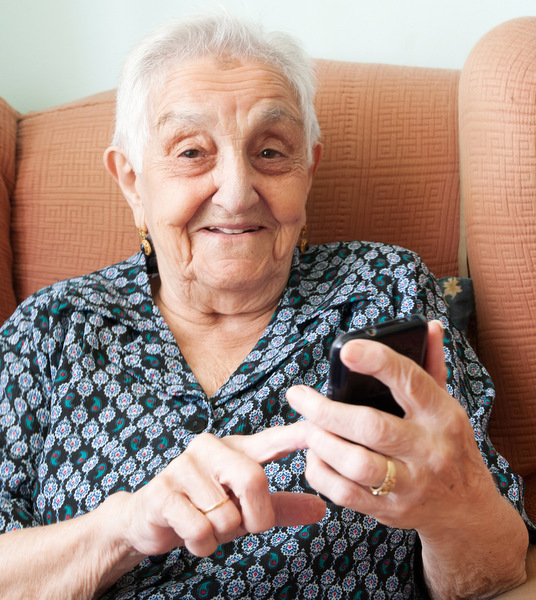For seniors struggling to get to and from medical appointments, coordinating transportation just got a little bit easier, thanks to ridesharing companies like Lyft and Uber. For many, the first real taste of freedom comes with the acquisition of a driver’s license. Suddenly a whole new world opens up, one covered in blacktop and filled with endless possibility. But licenses don’t last forever, and eventually we are all forced to surrender the driver’s seat. While public transportation, bicycles, and even taxi services can help the “carless” get around, for many older adults giving up the car keys means giving up independence. But that’s all about to change! With the advent of Uber and Lyft, relatively budget-friendly, on-demand car service can be beckoned with the touch of a button. Because only 25% of American seniors own smartphones, in the past they’ve been left out of the rideshare loop. Recent efforts by Lyft and Uber aim to close that gap. In the last few years, both companies have embarked on programs designed to open up their services to older adults. No More Waiting Around According to Senior Housing News, 3.6 million U.S. citizens skip medical care and miss doctor’s appointments because they lack access to adequate transportation. For seniors, the inability to receive regular checkups and non-emergency medical care leaves them vulnerable to life-threatening complications. Many traditional transportation services available to seniors require advanced bookings, which can make impromptu appointments impossible. Pre-booked transportation services also operate within limited schedules, leaving seniors with no other option but to arrive hours early or wait around for a ride long after the examination is over. “The inefficiencies in this industry are enormous, and patients have no voice or alternative,” Anya Babbitt, Founder & CEO of SPLT stated in a...
Active Aging Tech
Senior fueled boom
According to the Consumer Technology Association, technology for the active aging presents a $24 billion market opportunity that could reach $42 billion by 2020. Most Americans over 40 probably remember the old Life Alert commercials featuring a kindly grandmother who suddenly – and quite dramatically – falls to the ground, writhing in pain. Unable to reach the phone, she uses her life alert necklace to call for help. Her line, “I’ve fallen, and I can’t get up!”, became a key catchphrase of the 1980s. In the past, equipping senior citizens with wearable emergency devices provided a sense of safety and security. But while those old ads featured frail adults prone to all manner of calamity, today’s senior citizen are healthier, more active, and increasingly tech savvy. Over the last decade, older adults and their families rely more and more on technology to stay connected and improve quality of life. As the authors of the March 2016 Consumer Technology Association (CTA) Report on Active Aging explain, “The world is aging, and so is America. Beneath the seismic shift in the U.S.’s demographics lies the aging population’s desire to live healthier and happier, stay active and independent, and pursue longevity and quality of life.” The New Retiree The modern senior citizen pursues an active lifestyle with time devoted to physical activity and social and community participation. There is also collective rejection of traditional assisted living within this demographic. As Health Populi explains in their analysis of the CTA report, these new senior citizens are committed to a “resiliently stubborn wish to age comfortably at home.” “This population rejects passive aging,” states the report. For today’s older adults, retirement goal revolve less around leisurely days of rest and relaxation and more on “a proactive way of living that...
Paperless Progress
Electronic Health Records
With thirty years of experience in nursing and senior care, Rhonda Knisley understands the power of ditching paper records for digital data. For the last three decades, Rhonda Knisley has watched healthcare change from paper archives and prescription pads to digital data and mobile record keeping. All along, she’s focused on providing senior living residents with personalized care while being at the forefront of some the industry’s newest technologies and services. Rough and Rewarding “When I started my job 30 years ago, I walked into the building and down the longest hall. There were 35 residents all lined up on one side of the hallway in their wheelchairs. I looked at them and thought to myself, ‘This may be the worst job I’ll ever have,’” she admits. “But then I absolutely loved it! I walked in as a floor nurse and within six months, I was the director of nursing. Within a year, I was the executive director of nursing. In the end, I became a consultant. Overall, it’s been very rewarding.” As Director of Nursing for First Community Village, Rhonda Knisley has done everything from coordinating software implementations to running multi-facility nursing operations. “I loved working in the continuing care arena,” she says. “I’d see people come into the healthcare center and then transition back into the community, and I can see how they are able to stay connected with their friends and family.” A Multifaceted Population Headquartered Ohio, National Church Residences is the nation’s largest not-for-profit provider of affordable senior housing and services with 340 communities in 28 states and Puerto Rico. At First Community Village, a National Church Residence property located in Arlington, OH, the community residents encompass a varied demographic. “We have a very affluent population, and because it’s Upper Arlington,...
Housing Options
Care, Cost, Choice for Seniors
With home prices rising faster than the cost of senior housing, many older adults could be ready to make the change from homeowner to senior living resident. For Americans facing retirement age, it can be difficult to determine when to trade in the private home for a senior living residence. While some seniors fear losing a certain amount of independence or surrendering to age and infirmity, others may be primarily concerned with finances. Data provided by A Place for Mom reveals many budget-minded retirees could be better off selling the family home and moving into a senior housing. A Place for Mom collected the data as part of its Senior Living Cost Index. By comparing expenditures on actual rent and care at over 2000 U.S. locations, the index delivers a database for consumers looking to quantify the pros and cons of retirement living. For Charlie Severn, vice president of brand marketing at A Place for Mom, the index stands out from other databases because it includes the actual rent and senior care payments, instead of the typical cost-of-care estimate, making it a “first of its kind.” According to the Index, which includes data from over 100,000 move-ins from 2012-2015, there has been 2.7% rise in all types of senior care in the last year. This increase is 1.5 times faster than core inflation, but still slower than the 7% rise in home prices. As a result, Severn explains, selling the family home may mitigate much of the outlay of moving into senior housing. “This makes the sale of a home from a timing standpoint pretty good,” he tells Senior Housing News. In the end, A Place for Mom hopes the National Senior Living Index can provide helpful information on senior housing options. The Index lists...
Brexit Bonus
Senior Housing Investment
While international markets reel in the aftermath of the Brexit vote, U.S. REITs and senior housing providers are well poised to not only survive, but thrive. It will be months before the international markets begin to feel the effects of the Brexit vote, and probably years before any real assessments can be made on the economic and political impacts of Britain’s decision to exit the European Union. With uncertainty and fear looming, Senior Housing News (SHN) presents a mostly reassuring profile explaining how the U.S. senior housing market can weather the storm. The bottom line: U.S. senior living providers will not only survive, but perhaps even thrive thanks to a mix of strong portfolios, stable property values, and domestic insularity. Evolving Circumstances There’s plenty to worry about in terms of Britain’s separation from the E.U. Many predicted complete economic Armageddon and while the U.S. stock market did experience a round of sell-offs and tanking stock values, overall international markets seem to be holding steady. Additionally, some REITS with senior housing in their portfolio actually performed quite well, with both Ventas and HCP ending the day on an upswing. Although a weakened British pound may introduce another layer of caution, slower expansion does not necessarily translate to catastrophe. In fact, many U.S. REITS may capitalize on the opportunity presented by a more favorable exchange rate by increasing property acquisitions in the U.K. “[Brexit] will give them more of the field to themselves because the levered investors are going to find debt financing somewhat difficult in the next couple of quarters,” Keith Harris, London-based executive director for specialist markets at CBRE Limited, tells SHN. “…I think the international investor who can take a long view on currency hedging is going to be fine. If anything, the...
Independence Cart
Creative Senior Living Concept
Many senior citizens living in assisted care facilities depend upon family, friends and staff to meet their needs. Due to issues with mobility and limited transportation options, seniors often find themselves unable to purchase the personal products they crave, from face cream to potato chips. For many older adults, this loss of independence and control can be frustrating and dispiriting. Dr. Eleanor Feldman Barbera came up with a simple solution – the Independence Cart. A “store on wheels,” the Independence Cart includes basic supplies – from stationary to snacks – available for purchase. The cart not only provides residents with a chance to make simple purchases, it frees up time for staff and family members often burdened with fulfilling these requests. Though some facilities have experimented with candy carts in the past – often to disastrous dietary results – Dr. Barbera champions the idea. “I believe this concept, taken in the right direction, could be successful in every way.” At one senior living property located in the middle-class borough of Queens, the Independence Cart delivers more than greeting cards and candy bars; it provides the chance to exert some self-sufficiency. At the helm of this mobile shopping mall is 96-year-old Trudy Schwartz (pictured). Though small in stature, and older than some of her customers, Trudy feels energized by the hours she spends volunteering at the center. “I’ve been so fortunate all my life that I really feel I have to do something to give back,” Trudy admits in an interview with Dr. Barbera about the cart. “I have lovely children and grandchildren and good health. Sure, I’ve had troubles, but for the most part, I’ve been very fortunate.” Trudy took over the cart from another volunteer after spending time at the center visiting her...
The Shelter Group
Solution Focused
For the Shelter Group’s LaTonya Lawson-Jones, Yardi’s suite of products provides enhanced operational efficiency and a personalized customer experience. “Time is money.” It’s an old saying, but for LaTonya Lawson-Jones, effective time management is key to a robust bottom line. As Business Systems Manager for the Shelter Group, LaTonya helps oversee a robust portfolio of 50 affordable housing properties, including 35 senior housing communities. LaTonya supervises a team tasked with tracking expenditures and providing support for a variety of electronic medication administration ad electronic health records applications. Multiple Tasks, One Solution With a roster of multifamily and senior living communities valued at $2 billion, the Shelter Group’s affordable and senior living properties cover a vast swath of the eastern seaboard, including New York, New Jersey, Pennsylvania, Maryland and Virginia. In order to coordinate its multi-state operations, the Shelter Group relies on a whole host of Yardi products. “On the affordable side we use Yardi for our entire workload, from the prospect to resident screening to move in,” explains LaTonya. “On the senior housing side, we also use Yardi for marketing and in the business office for billing, managing services, and for all of our reporting needs.” With Yardi Voyager Affordable Housing doing a majority of the heavy lifting, LaTonya is eager to incorporate CRM, EHR, and EMR. “We are looking forward to using these products,” admits LaTonya. “We are working towards getting all of our employees on eLearning, and I found out that will be out soon, so I’m excited. We really can’t wait for the implementation to start.” No More Paperwork Most business managers agree the invoice process can be time-consuming and fraught with error. Submittals and approvals create lag, and hours are wasted tracking expenses and waiting for the right signature. Three...
Small Town Seniors
Limited Care Options
With over 20% of older Americans living outside major cities, rural senior living providers face unique challenges and untapped opportunity In small towns across the country, senior citizens face a trio of challenges as they transition into retirement: lower than average incomes, few housing options, and a shortage of services. As aging baby boomers put even greater strain on senior living services, rural communities throughout the United States will have to act quickly to meet demand. Small, Expensive and Rare According to a 2014 survey by the Housing Assistance Council (HAC) entitled Housing and Aging Rural America: Rural Seniors and Their Homes, nearly one-quarter of US seniors live in rural communities. Unfortunately, for older adults residing outside of the nations’ urban centers, senior housing options are slim to nonexistent. Additionally, the standard of care available doesn’t always compare to what’s offered in suburban and urban areas. Even in situations where facilities exist, most are too expensive because incomes are usually much lower outside larger municipalities. “Much of the affordable-housing stock in rural housing areas is old and in need of repair, says Sheila Crowley, president of the National Low-Income Housing Coalition. “Many of the people who live there don’t have the resources that they need in order to keep the houses in good repair,” “A rapidly aging population will significantly impact nearly all aspects of the nation’s social, economic, and housing systems,” note the authors of HAC’s report. “With the scope and magnitude of the looming demographic shift of seniors, rural communities will need to develop a range of housing options available to seniors such as more rental housing, rehabilitation and repair programs, housing with services, and assisted living.” Filling the Void Where HAC highlights the challenges of rural development, Jane Adler sees opportunity....
Similar Challenges
Seniors, students & housing
When it comes to new construction, students are finding themselves in a dilemma similar to renters twice their age. A shortage of affordable and middle-market properties has students and seniors struggling to pay for shelter. Senior Care In senior housing, Boomers face limited affordable and middle-income options for their aging loved ones or themselves. New construction caters largely to high-end buyers. Location is a major factor: seniors’ most desired areas include sites with easy access to public transportation, activities, and proximity to family. These centralized locations come with high land costs. In the end, those costs and the costs of fluctuating building materials roll over to the seniors and their caretakers. Vorice Ratchford served as her mother’s caregiver for nearly a decade. She often checked for housing near her home in a southeastern suburb of Atlanta, but could never find accommodations within her price range. “Even when she was healthier, we couldn’t find housing that we could afford,” recalls Ratchford. “As her health declined—she had dementia—it became even harder.” The Alzheimer’s Association reports that housing costs range from $43,200 per year for basic services to $91,250 per year for a private room in a nursing home. In a single-earner household, taking on additional debt to pay for senior housing wasn’t an option. According to the 2013 Survey of Consumer Finances, the average American household has $15,054.54 in credit card debt, excluding mortgages and auto loans. Ratchford, like many Americans, has been struggling toward debt freedom. Ratchford became a full-time caregiver for her mother, putting three adults on the support of a single income. “I can’t imagine how someone with a full-time job could be a caregiver for someone with dementia,” Ratchford says. “Even with my previous job, every cent of my income would need...
Tech-Savvy Seniors
Supporting longevity
While the benefits of introducing computers and other digital devices to seniors seems clear, it can be difficult for senior living facilities to convince residents to take that leap. Could computers be the next fountain of youth? Studies have shown seniors exposed to modern technology demonstrate less cognitive decline overall compared to their less computer-savvy counterparts. Thankfully, there’s a whole slew of apps and programs designed to make it easier than ever for even the most gadget-phobic user to navigate the online world like a pro. In Like Flynn Data collected on intelligence quotients over the last 80 years indicate a clear upswing. Called the Flynn effect, this sustained upsurge of IQ scores can mostly be traced to improvements in education, nutrition and healthcare, but a recent study from the International Institute for Applied Systems Analysis reveals another surprising possibility: smart phones and tablets Published in the journal Intelligence, the study – lead by Valeria Bordone – tested two different groups of seniors over 50: one group in 2006 and the second group in 2012. When comparing the results, Bordone’s team saw a marked improvement in cognitive function. The second group performed better on a series of tests, demonstrating superior abilities in verbal fluency and recall. While not definitive, Bordone and her team attribute this result to increased access to mobile devices and other technologies. “We show for the first time that although compositional changes of the older population in terms of education partly explain the Flynn effect, the increasing use of modern technology (i.e., computers and mobile phones) in the first decade of the 2000s also contributes to its explanation,” concludes the report. Diving Into Digital A 2015 report clearly shows a rise in technological knowledge amongst adults over 50. For example, in...
Bridging Generations
Senior and Millennial Housing
A camera pans across the room, revealing the usual suspects – senior residents grouped around small tables, some in wheelchairs, creating a typical scene playing out in senior living facilities across the world. And then, the unexpected…a young man enters, sitting down to share cakes and conversation. At that moment, it becomes clear – this is not your typical “old folks home.” Finland, like many industrialized nations throughout the world, is facing a severe housing problem. According to estimates, in Helsinki 90,000 renters are competing for approximately 60,000 units. This gap in availability has resulted in a brutal housing market, severely affecting young adults trying to move out and live independently. Ranked as the 16th most expensive city in the world, Helsinki is facing rapid population growth and ever-rising housing costs – leaving the city’s youth vulnerable to homelessness. “It’s a very expensive city to live in,” 23-year-old kindergarten teacher Emil Bostrom recently explained to CNN. “If you manage to get an apartment that the city owns, it can be quite affordable. But the amount of applicants for those apartments is so high that the waiting list takes forever.” “Youth homelessness is the sum of many parts, and there is no simple solution,” Finnish Youth Housing Association Secretary General Minna Vierikko declares. “It is essential that different actors join their forces and start seeking alternative models to solve the problem of youth homelessness. For Miki Mielonen, Homes That Fit provides a simple solution. Homes That Fit invites Finnish millennials to cohabitate with Helsinki senior citizens as part of a pilot program run by City of Helsinki’s Youth Department, Design Driven City, the non-profit rental housing company Alkuasunnot, and the national youth housing association Nuorisoasuntoliitto. In exchange for socializing with elderly residents, 25 eligible participants...
Keep Connected
National Assisted Living Week 2016
With its 2016 theme, Keep Connected, the National Center for Assisted Living hopes to shine a sotlight how technology can enhance the lives of senior citizens. According to a 2014 Pew report, almost 3/4th of American seniors own a cell phone, and more than half are online. In fact, though older adults are typically late adopters, Pew discovered that once seniors join the online world, “digital technology often becomes an integral part of their daily lives.” In recognition of the effect technology can have on the lives of older citizens, the National Center for Assisted Living (NCAL) announced the theme for National Assisted Living Week 2016 will be “Keep Connected.” Organizers hope the event, taking place September 11-17, will highlight how technology can improve the senior experience. “With this year’s theme, we hope to help overcome the mistaken belief that seniors are not interested in or able to learn about the latest modern advancements,” explains NCAL Executive Director Scott Tittle. “At the same time, we want to recognize the many revolutionary ways staff are enhancing care through new innovative tools and broadening their connections with the larger community.” For older adults transitioning into senior living, the physical distance from friends and family can be daunting. The disappearance of day-to-day contact with loved ones can leave retirees feeling isolated and alone, but that doesn’t have to be the norm. As programs like Sienna Senior Living’s Cyber Seniors prove, with a little coaching seniors can learn to use the latest apps and devices without difficulty. Laptops, phones and tablets empower older adults, helping to strengthen personal relationships and connect with us with the outside world. For senior living businesses using the Yardi Senior Living Suite™, the value of a connected community is evident. From the beginning,...
Sharing Stories
The History Project
The History Project aims to enable seniors and their families to build digital, interactive time capsules to not only preserve the past but also put it into context for future generations. The History Project (THP) co-founder Niles Lichtenstein, always imagined the steady presence of his father accompanying him on his first day at college. Yet when the day came and Lichtenstein crossed the threshold at Harvard Yard, he was alone; his father had passed away before high school graduation. Lichtenstein says in a THP video, “Although I felt his spirit with me, it was his words of wisdom and past experiences that I wanted. At that moment, I began to imagine a world where even if he wasn’t there, I could have access to his college experience in the History Project.” “I would find rich traces of who he was and the life he led things that would help me understand who I was and who I was to become.” And so began a personal project of archiving the souvenirs and memories of father to create a history able to encapsulate the man and preserve his contributions and connections. Out of this singular effort, the History Project was born. With the goal of simplifying the archival process, THP provides a framework able to collect and upload all manner of memorabilia and mementos, from music to photos to oral histories. Additionally, THP invites collaboration. Friends and family are encouraged to contribute their own thoughts and content. Through this intergenerational cooperation, an interwoven record of relationships and experiences is created, revealing a rich tapestry of the hopes, fears, and experience. THP’s lofty goals have sparked interest and over $2 million in funding from venture capitalists, pushing the platform from visualization to realization. As part of the...
Active Retirement
Best U.S. Cities
With its mild weather and low-cost housing, Florida has held the crown for top retirement destination for decades. However, what once intrigued and lured senior citizens to Gulf Coast condominiums and South Beach high rises no longer carries sway. A new era of retirees are changing the notion of “ideal retirement location.” The king has been deposed, and though Pompano Beach and West Palm Beach still maintains some allure, the top spots now include more than a few unlikely candidates. A Different Kind of Retiree SmartAsset recently set out to discover what U.S. cities were best for active retirement. What they found was a shift away from quiet, sedentary twilight years. Instead, today’s seniors want stronger community connections, friendly tax policies, and all the amenities associated with an active lifestyle. With boomers poised to dominate all facets of senior living over the next several decades, the cliché of aimless retirees splitting time between golf and bingo has changed. As a reflection of this shift, SmartAsset chose to study the nation’s top cities based on this new set of metrics. What they found upends some of the most basic assumptions about what makes a perfect golden years retreat. The Active Lifestyle SmartAsset considered four metrics for their study: average effective tax rate, the number of doctors per 1000 residents, the number of retirement centers per 1000 inhabitants, and percentage of population made up by senior citizens. When assessing a city’s active lifestyle compatibility, SmartAsset determined the area’s Walk Score, which measures pedestrian navigability, safety and convenience. They also took into account the number of golf courses per 100,000 residents (some standards still apply!). Another key data point measured the number of other fitness-related businesses, like gyms, recreations centers and sporting goods stores, in the area. Once...
Bridging the Digital Divide
Sienna Senior Living
We live in an increasingly connected society, with unlimited data at our fingertips and the ability to communicate quickly with friends and family living next door or half-way ‘round the world. There’s an ease and level of expectation we take for granted when it comes to bending the latest technology to our will, but for many senior citizens, modern digital tools and gadgets often seem complicated and out of reach. It’s a generational gap the Cyber-Seniors program hopes to bridge through its innovative approach to senior education. For Sienna Senior Living, participating in the program is a natural extension of the company’s commitment to providing its clients with comfort, independence and “the warmth of human connection” through its forward thinking, resident-centered approach to senior care. The brainchild of two teenage sisters inspired by the impact of the Internet on the lives of their own grandparents, Cyber Seniors began in earnest in 2009. Through the program, high school students help seniors develop a technology skill set that allows them to use computers, the internet and other digital tools to connect with friends, family and their community. Over the years, the program has collaborated with the University of Toronto Occupational and Therapy Masters Program and Sienna Senior Living to develop a best practice resource manual to ease implementation of similar programs throughout Canada across all Sienna Senior Living Retirement Residences and Long Term Care Homes. Last year’s pilot projects involved residents at the Cedarvale and Villa Leonardo retirement communities. As Sonia Roul, Recreation and Leisure Consultant for Sienna Senior Living’s Long Term Care Division, explains, the Cyber-Seniors “empowers the residents to go beyond their walls and explore what the world of technology can offer them.” “Our hope was to help our residents connect with their loved ones in a new way,” says Roul, “while also providing them with the opportunity to connect on a human level with a much younger generation.” Refreshed Spirits and Enhanced Health For those involved in the project, the Cyber Seniors program is more than just a computer class; it’s a source of life enrichment for all the participants. By pairing interested retirees with volunteer high school students, the Cyber Seniors program creates a cooperative, mutually rewarding learning environment. The hope is that the program will prompt meaningful, multi-generational conversations and inspire new interests amongst residences in the senior living communities. For Sienna Living, the appeal of the Cyber Seniors program primarily involves the chance to create bonds and build connections between residents and the community. As a source of entertainment and physical and psychological enhancement, the program aims high and hits the mark. As seniors become more comfortable accessing the World Wide Web and using YouTube, Skype and more, they broaden their horizons and connect with the outside world while also building long-lasting friendships. “Breaking down the barriers of communication through learning and development truly does wonder for the residents and students involved,” declares Roul. “The bonds created between the students and the residents were unexpectedly powerful,” Roul explains. “They were able to create connections with past lifestyles, and there was a mutual exploration across natural areas of interest.” The seniors are full of admiration for their teen advisers, dazzled by their ability to navigate the online universe, and heartened by the supportive and encouraging learning environment created by their young instructors. “To see them be so young but know so much is amazing,” explains a Cedarvale resident in a video about the program. For the teens, the benefits of assuming the mantle of Cyber Senior instructor allows them the opportunity to experience leadership roles while also forging intergenerational relationships. “It feels awesome,” declares a teen participant in the video. “It feels like you’re bridging the gap between the past and now.” Broadened Horizons and Deepened Connections In June of 2014, the Sienna Senior Living’s Cedarvale Lodge Retirement and Care Community in Keswick Ontario collaborated with...
Boycotting Bingo
Senior Gaming Gains Ground
From pinball to Pac-Man, arcade games and their video counterparts tend to be relegated to the children’s table – derided as juvenile entertainments that sap brainpower and encourage antisocial behavior. Lately, though, that perspective has shifted as more and more studies reveal a host of social and mental benefits associated with game play, especially for those 65 years and older. While a lot of study has gone into the effects of video games on children and young adults, in the past few years attention has shifted to how video game play can affect perceptual and cognitive abilities in older adults – specifically senior citizens aged 65 and older. Because age can influence an individual’s ability to participate in physical activities, many see video games as a perfect addition to senior living healthcare protocols. For many seniors facing mobility challenges, the interactive feature of online video games can with the isolation and deteriorating brain function so many elderly adults face as they age. With a plethora of options – from immersive adventure games to puzzle-solving offerings – video games can help enhance cognitive function and increase social interaction by allowing players to connect with other users through the game’s online community. A variety of studies has attempted to establish a connection between video game play and cognitive function. While many researchers have reported significantly improved mental functionality, including improved memory and analytical reasoning older adults as the result of playing a video game, the connection between video game play and increased cognitive function can be tenuous. A Frontiers in Psychology report from 2013 concluded, “video game interventions may hold promise in terms of addressing declines associated with cognitive aging, but there are still many unknowns.” Follow-up tests found that the seniors who played the strategy...
Marketing Reality
In Senior Housing
Traditional senior housing marketing—idyllic stock photos and expertly crafted text– no longer stands out to prospects. A growing trend reveals the power of marketing that features real residents, their quotations, and their experiences at the community. Yardi client, Senior Star, is far ahead of the trend. The company made the decision to focus on resident-centric marketing more than 15 years ago. Letitia Jackson, Vice President of Corporate Engagement, explains, “We could think of no one better to represent what Senior Star does, why we do what we do, and who we serve.” Senior Star rarely uses stock images. A good stock image gains popularity and circulates throughout websites targeted towards seniors. Brands become indistinguishable. Jackson says, “We believe this may have a detrimental impact on organizational credibility.” In contrast, custom images add value to the prospect’s online experience. Branding is reinforced: the logo on staff uniforms, the color scheme in interior décor, and most importantly, faces that the prospects will recognize once they visit the site. Real residents come with genuine ties to the local community, which is a major win in most cases. “There is much to be said for the value in the local markets of a resident’s influence,” says Jackson. “Most communities in the industry have a resident or two who is well known or even a local celebrity. We know the power reviews carry; a resident who is known locally and is used in our advertising may be perceived as providing a tacit endorsement.” The same rings true for staff. “In addition to using residents, we also use actual Senior Star associates. It creates a degree of confidence and an early connection when someone who is considering our community actually encounters and recognizes an associate they’ve ‘met’ in our...
Empowering Seniors
Total Life Wellness
Senior communities are breaking through the stereotypes that once defined them. In place of one-size-fits-all complexes, the industry trends towards niche markets. Bygone are the days of scheduled meals and weekly bingo—well, bingo isn’t going anywhere–but freestyle dining is the new standard. Instead of quiet evenings around the television, modern senior housing hones in on fresh opportunities that enrich residents’ lives. These activities empower seniors, allowing them to experience the health-boosting benefits of personal fulfillment and a sense of purpose. One method of empowerment comes through lifelong learning programs. These programs take the form of non-credit academic courses, volunteer work, or educational travel. Each promotes mental, physical, and social well-being for residents. In her book Learning Later, Living Greater: The Secret for Making the Most of Your After-50 Years, expert Nancy Merz Nordstrom details the benefits of lifelong learning programs. Among the benefits, education furnishes seniors with a sense of self-fulfillment and purpose—both of which contribute to improved mood and outlook for seniors. “We’re out and about,” says Nordstrom. “We’re taking part in educational programs, traveling all over the world, and offering our expertise to society through meaningful community involvement. We’re not a strain on society; we’re an incredible asset.” Education also helps seniors develop new skills that will accompany them as they face personal and social change. “Lifelong learning enables us to keep up with society’s changes – especially the technological ones. A learning environment with our peers not only makes it possible to stay abreast of change, it also makes it fun.” The Lifelong Living program at Lasell Village emphasizes the benefits of mental stimulation for residents’ wellbeing. Residents must participate in 450 hours of learning or fitness activities each calendar year. They can determine the atmosphere in which they feel the...
RentCafe Senior Living...
New Yardi product
Yardi recently released RentCafe® Senior Living™, the latest addition to the Yardi Senior Living Suite™. This much anticipated tool makes it easier than ever for senior care providers to promote transparency and engagement with seniors and their responsible parties. Imagine one fully integrated site that allows your clients to monitor the care experience and communicate with care providers. Now imagine that the same portal allows residents to make payments and track maintenance requests. With these features combined, you’ve only brushed the tip of iceberg. RentCafe Senior Living is capable of so much more. RentCafe Senior Living fuels customer satisfaction by combining access and convenience. From a desktop or mobile device, residents and their loved ones can take an active role in the care experience. Lengthy wait times on the phone and restricted office hours no long impeded access. With RentCafe Senior Living, users have resources at their fingertips. At any time, authorized users have access to resident health records, prescriptions, activities calendars and participation logs. Residents’ loved ones can rest assured that their senior is cared for and enjoying the amenities that the community has to offer. One of the most popular features of RentCafe Senior Living is the convenient online bill pay tool. Authorized users can access current and past statements. They then have the choice to make a single or reoccurring payment. Withdrawal options include ACH, credit card and debit card accounts. If there is ever a question, users can contact the care provider directly. Problems are reported and tracked in real time. Both users and care providers stay up-to-date on the most recent developments. Another popular feature is the maintenance request option. Web savvy residents or visitors can report problems and track follow-up efforts from their smartphones. Service requests initiated through...
Silver Tsunami
Housing America’s seniors
America is in the midst of an unprecedented growth of the senior population. By 2030 there will be approximately 132 million individuals over the age of 50, the Joint Center for Housing Studies of Harvard University (JCHS) predicts. At the same time, one in five Americans will be 65 and over, with the 65-74 age group reaching 38.6 million, nearly double of what their numbers were in 2010. By 2040 every eighth American will be over the age of 75, while currently only one in sixteen is. All in all, in less than 20 years the 50+ generation will increase by 23 million. While there’s still time to plan for this unprecedented growth, communities, developers and policy makers need to implement long-term plans to safely and equitably accommodate America’s silver Boomers. The Silver Tsunami The silver tsunami, as some have dubbed the influx of aging Baby Boomers, started showing its force in the mid-nineties, when the oldest Baby Boomers hit 50. Between 1990 and 2010, the pre-retirement age bracket (50 to 64 years old) swelled from 32.5 million to 58.8 million. With the oldest Boomers steadily crossing 65 now, that growth will feed into the senior demographic, causing an unprecedented growth. Family makeup impacts senior housing needs. 47 percent of householders under the age of 50 have at least one child living in the home. For those over 50, that number drops to nine percent. The number of people living alone also increases steadily after 50. By age 80, three out of five households consist of a single person, and 75 percent of those are women. This in many cases leaves seniors and pre-retirees in oversized homes, which can be costly to maintain. Pre-retirees and seniors looking to downsize and/or move into some form of senior housing were hit especially hard during the economic downturn, as their home equity was locked up in a soft housing market. The recovering single-family market however, paired with a strengthening stock market has a lot of seniors feeling safer about their options, Marcus and Millichap found. Freeing home equity has allowed for more seniors to relocate funds towards senior housing such as continued care retirement communities (CCRC). A more stable economic environment is also allowing younger generations to dedicate funds towards specialized housing for senior parents. As a result, occupancy has grown across all senior housing segments: independent living occupancy is on the rise, and skilled nursing facilities are posting lower vacancies. Growing demand has also pushed up rents. The Affordable Care Act is also expected to help many seniors to access specialized care facilities. Seeking Senior-Friendly Housing As financial security and physical and cognitive abilities decrease with age, affordable, accessible and well-located housing becomes of utmost importance. Although quality of life in old age continues to improve, the increase in life expectancy also means that the number of adults living with some form of disability will also grow, at a time when most of the existing housing stock is ill equipped to cater to these needs. This birthed the universal design movement that aims to make built environments accessible and safe to individuals of all ages and abilities and allow for aging in place. According to JCHS, the five most important features of universal design are no-step entries, single floor living, extra-wide hallways and doors that allow for wheelchair access, switches and outlets reachable at any height and lever-style door and faucet handles. Only 57 percent of the existing housing stock incorporates at least two of these features. Although multifamily units built after 2000 are significantly more accessible than pre-1940 housing, most still lack the universal design quintuplet. For example, only one in five feature lever handles and only one in six has extra wide hallways and doors. Most adults over the age of 50 live in single family homes they own. Only a little over 60 percent of senior renter households...
Uber and Seniors
Transit and tech
You’ve probably heard – or personally experienced – the convenience and controversy of Uber. Taking on the traditional taxi transportation model, this global ride-sharing company has made a huge splash in changing the way ridesharing works. But Uber isn’t just about using an easy app to find a ride home from a party or the airport. The company is now branching out and setting its sights on the senior demographic cohort, hoping that it can make their lives a little easier – and maybe even help them stay independent longer. Two less well-known Uber services, uberASSIST and uberWAV, are designed specifically with seniors and the disabled in mind. Drivers for these services will operate vehicles that are accessible (such as a van with a ramp able to load a wheelchair), and often will have to take extra time to assist their passengers with boarding and departing the vehicle. uberASSIST, the senior service, hit the news in a big way last week because it was talked about at the White House Conference on Aging, an annual event that focuses on elder issues. Not long ago, Uber and competitor Lyft were hit with criticism, even lawsuits, for not complying with state and federal disability access regulations. Now, it appears that the company is taking steps to address those concerns. Pilot programs of uberASSIST include Ventura, Calif.; two Florida cities (Gainesville and Miami Lakes), Columbus, Ohio; Austin, Texas; and Phoenix and Tucson, Ariz. The intent is to partner with cities and community senior centers to get seniors access to the technology required to request a ride – and even teach them how to use an app or mobile communication device. As the Baby Boomers age into retirement and their senior stage of their lives, services like this...
Silent Victims
Housing Young + Old
Awareness of the affordable housing crisis has grown exponentially inside of industry circles. Unfortunately, public awareness is still woefully low and solutions to the problem have yet to manifest. A new organization lead by Ron Terwilliger will collect data that can guide policymakers towards crisis resolution. Simultaneously, the data will help to protect the most vulnerable victims of the affordable housing crisis, America’s youth and seniors. “A legacy of the great recession, the rental affordability crisis is often overlooked by policymakers, ignored by the media, and underestimated, at best, by the general public,” announced Ron Terwilliger, former CEO of Trammell Crow Residential. Terwilliger reports that three-fourths of federal spending for housing supports homeowners, who generally have more than twice the income of renters. In contrast, federal rental assistance remains underfunded and only one-fourth of those in need are eligible for support. Of those in need, a growing number are seniors and children. Many people who cannot secure affordable housing face homelessness. Child homelessness is at a historic high. America’s Youngest Outcasts reports that homelessness impacts nearly 1 in every 30 children in the nation. This denotes an 8 percent increase in child homelessness between 2012 and 2013. The study ranked all 50 states according to the number of homeless children reported in the area. Causes for child homelessness include high poverty rates and a lack of affordable housing. “Living in shelters, neighbors’ basements, cars, campgrounds, and worse—homeless children are the most invisible and neglected individuals in our society,” begins Dr. Carmela DeCandia, director of The National Center on Family Homelessness. “Without decisive action now, the federal goal of ending childhood homelessness by 2020 will soon be out of reach.” Seniors are also silent victims of the affordable housing crisis. The number of seniors...
How Seniors Search
For housing and health
Research funded by Google sheds light on how seniors search for housing for themselves and their aging parents. The results are helping senior housing experts improve marketing strategies and concentrate their efforts on what truly matters to America’s aging population. In October 2014, Google issued a survey to 2,000 Baby Boomers between the ages of 50-58 and 59-68. Those who participated in the survey are among the 75 percent of seniors who use search engines to learn more about senior housing. Survey respondents provided insights on how they used search engines to find dwellings and care providers, as well as features that they seek out when filtering through their options. Google recently released results from the survey at the What’s Next Boomer Business Summit in Chicago: When searching for housing for themselves, respondents used keywords such as “independent living,” and “55+ active communities.” They sought housing with features that promoted an engaging and social lifestyle such as group events, excursions, pet accommodations and complimentary transportation. Younger Boomers are increasingly tech savvy. They desire self-care tools that allow them to manage their own health and wellbeing electronically; 25 percent of respondents regularly use EHRs to manage their health. They tended to search for wearable devices that can help them monitor their vital signs and fitness activities. While self-care is important, it does not overshadow Boomers’ interest in quality personnel onsite. One-third of respondents expect to work with a care manager through the senior housing community who can help them manage their health and wellness options. When searching for housing on behalf of their parents, respondents searched using terms like “skilled nursing,” or “assisted living communities.” Communities that offered specialized care, a low staff-to-resident ratio, and proximity to emergency care facilities ranked high on their lists....
Tech for Senior Care
Monitoring and Medical
Statistics show that over 95 percent of the people over 75 years of age prefer to stay at home rather than move to assisted living residences or nursing homes. It’s a perfectly natural desire to remain independent, but for their children this translates into a source of worry – that they may fall, forget to take their meds, or simply just need assistance day to day. In recent years, technology has provided new options to adult children and their parents, revolutionizing the opportunity to stay at home, safely. The new technologies, although still a young industry, not only reduce worries, but enhance family relationships and reduce costs. These technologies vary from very basic to sophisticated. The technology in development can be broken down into two camps: one for monitoring and surveillance with electronic devices keeping track of a person’s medical condition, and automatically alert health care staff when intervention is required. Sensors are also used throughout the home and will alert the designated person if, for instance, someone has not left the bathroom after a certain period of time, a sign that something may have gone wrong. Philips Lifeline is a monitoring system with a basic set of features: in case of emergency, users push the button of a pendant they wear on themselves, thus alerting the Lifeline call center. An operator calls on a speakerphone to check on the problem and if no one answers caregivers and emergency medical personnel will be announced. The system has a fall-detection feature that contacts the call center immediately once a fall is detected. MedMinder is a medication management system that acts like a computerized pillbox. It doses the different medications the user needs to take on a daily basis and when the time comes to take...



